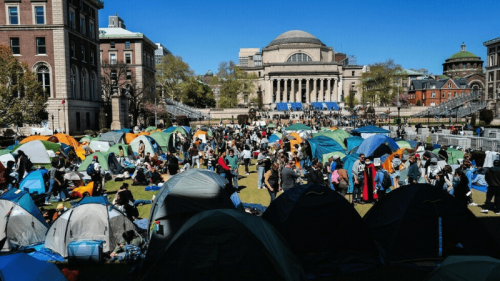
The Supreme Court has appointed a one-man commission to probe the 2007 Lal Masjid military operation, which continues to haunt the country in many ways. The nation should know the entire truth about the bloody incident to end the controversy surrounding the tragedy.
Therefore the investigation should not be restricted to finding out how many people were killed in the operation and whether the families of the victims were paid compensation. It is more important for the commission to ascertain the circumstances that led to the military action.
Was the raid on the mosque completely unprovoked? Who were the gunmen entrenched inside the mosque who engaged the elite special forces for over one week, killing at least 15 soldiers, including an officer? Why sophisticated weapons were stored in a place of worship? The commission needs to investigate these questions and establish the facts about the deadly battle in July 2007 that has left in its wake a violent legacy of suicide bombings, killing thousands of citizens.
The gruesome end of the Lal Masjid siege marked a watershed in Pakistan’s struggle with violent extremism. It led to a declaration of war against the military by the militants. It also had other grievous repercussions which still cast their shadows over the country’s politics.
It may be argued that such massive use of force was avoidable, but the action cannot be described as unprovoked. Tension had been building up for the past many years as the capital’s central mosque sitting a stone’s throw from the ISI’s headquarters became the centre of radical Islamism and anti-government protests.
In 2004 the clerics of the mosque issued a fatwa calling the people to join the militant resistance against the army in Waziristan.
They declared that those fighting the Pakistani forces were martyrs and urged the people not to give Islamic burial to the soldiers killed in the fighting.
The mosque had also become a base for Taliban-style vigilante squads. Tension escalated after female students of the Jamia Hafsa, who were linked with Lal Masjid, occupied an adjoining children’s library.
Led by fearsome, stick-wielding, burqa-clad young women radicals would pour out of the mosque and the two madressahs affiliated to it, raiding houses allegedly used as brothels, kidnapping suspected prostitutes, and making bonfires of videocassettes and DVDs that they regarded as un-Islamic.
These activities caused panic among citizens and compelled them to call upon the government to stop vigilante squad.
Meanwhile, the Lal Masjid clerics set up courts to dispense their version of Islamic justice, and people began coming to them to resolve all sorts of grievances, from business matters to personal disputes. They also presented a charter for a Taliban-style Islamic rule in the country and called for setting up revolutionary committees. These unlawful actions certainly presented a serious challenge to the administration.
But for months the administration had tolerated activities of the self-styled anti-vice squads even after they kidnapped a number of policemen and ransacked government buildings.
The Musharraf government finally decided to act as the situation escalated to a point that some feared the militants might take over the capital itself. But the final onslaught was held off in order to allow time for the students to surrender. Announcements on loudspeakers warned the girls over and over again to leave the premises.
Over the next few days the army set several deadlines for surrender. Except for an unspecified number of hardcore militants, almost all the female and male madressah students were believed to have left the Lal Masjid before the final operation was carried out. For seven consecutive days the militants responded to the military’s siege with automatic fire, showing little sign of fatigue or shortage of ammunition.
On a visit a day after the operation I found every part of the sprawling complex scarred by the battle. In the blackened basement where Abdul Rashid Ghazi and half a dozen followers made a last stand, the wall had been shattered by explosives.
The acrid stench of battle hung in the air. Metal furniture lay piled in a corner. The windowless room inside the Jamia Hafsa was charred; a suicide bomber had detonated his charge as the commandos stormed the building.
In the next room swarms of flies buzzed over the blood-stained floor and rubble was scattered where the militants had built a bunker. Walls that had been painted with Islamic verses were riddled with bullet holes, evidence of a vicious 35-hour assault in which the commandos fought from room to room against heavily armed militants. The resistance was indeed beyond the expectations of the armed forces.
Let’s hope the commission would also be able to ascertain the identity of those fighters and why were those armed men present inside the mosque.












































